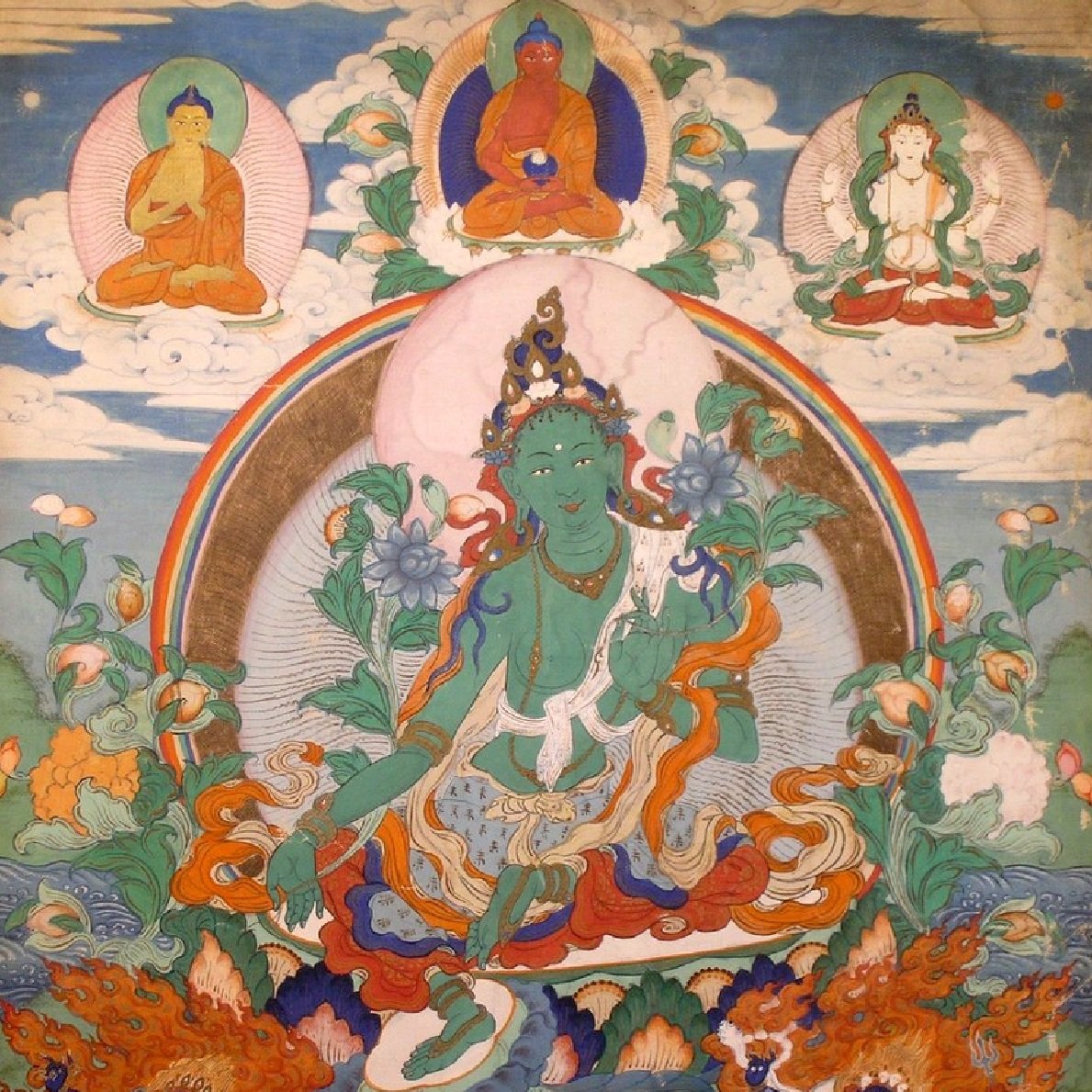The Refuge of the Boundless Heart
Lama Döndrup discusses the power of cultivating the four immeasurable states of love, compassion, joy, and equanimity.
“This is a moment when we can truly take refuge in the Three Jewels: the Buddha, Dharma, and Sangha, and the connection that we have developed with them. ”
WE ARE LIVING IN A TIME when our heart’s ordinary capacity is being stretched daily. We are challenged every day by the witnessing of injustice, inequity and violence, the heartbreak of loss, the multiple levels of impact of the pandemic, the divisiveness of politics and social discourse, and concern for how we as a community and as a human race move forward in a way that is humane, compassionate, and sustainable. Even when we are able to courageously face the challenges we are presented with, moments of defeat, discouragement, grief, and doubt about our capacity to hold these experiences and remain open inevitably arise.
During our time on the spiritual path, we have engaged in many hours of prayer, practice, study, and contemplation. Countless times we have chanted a refuge prayer and generated the wish to awaken for all beings. It is in turbulent times like these that we can lean back into the wisdom and the steady, soft, compassionate heart that we have worked to cultivate over the years. This is a moment when we can truly take refuge in the Three Jewels and the Three Roots (the Buddha, Dharma, and Sangha, and our Root Lama, the Yidams, and the Dakinis) the connection that we have developed with them. We can place our confidence in our innate goodness, the wisdom of the teachings of the buddhadharma, and the bodhisattvas who have traveled this path before us and who are committed to guiding us towards freedom.
A place of refuge that is always helpful and particularly during times of difficulty is the brahma viharas. Brahma vihara literally means divine abode. This refers to the four immeasurable states of love, compassion, joy, and equanimity. When one genuinely abides in these states, the experience is sublime and boundless. These qualities are the natural outflow of our heart, which is boundless by nature. These qualities of the heart are not unfamiliar to us, but we typically experience them in a limited way.
Our habitual way of being is built on a foundation of experiencing a divide between self and other; seeing ourselves and others as separate entities and having transactional exchanges that are often guided by an agenda of some sort. When the heart is moving from this habitual, ordinary point of view, we don’t experience love, compassion, joy, and equanimity as boundless. These awakened qualities flow from the vast, openness of mind. When we fixate on the stream of thoughts that continuously create this sense of a separate self, we constrict that unimpeded flow and only experience a sliver of the awakened qualities that are available to us. When we let go of our personal agendas and the perceived divide between self and other and turn our mind one-pointedly in the direction of these qualities, we naturally align ourselves with our innate, unbounded heart. We inhabit it and effortlessly radiate these limitless qualities, which are inherent in our being.
All of the Mahayana and Vajrayana practices that we do at Sukhasiddhi Foundation are designed to help us loosen that grip on the small sense of self which then allows us to experience spacious, open awareness, infused with qualities of an awakened heart and mind. The traditional practice of the Four Immeasurables is designed to help us reconnect with our innate awakened heart and guide us from the limited experience of love, compassion, joy, and equanimity into one that is boundless and sublime. This is done through reflection and repetition of aspirations for ours and others’ happiness and well-being. A traditional Four Immeasurable prayer that can be used for this purpose is:
May all beings have happiness and the causes of happiness!
May all beings have no suffering nor the causes of suffering!
May all beings have the supreme bliss which is free from all suffering!
May all beings live in the great equanimity, which is free from all attachment and aversion!
Vajrayana practices are brilliantly designed methods to help us uncover awakened qualities that are innate in our being but remain out of our reach because of habitual patterns. They are rich with multiple layers of symbology and engage the practitioner simultaneously at the levels of body, speech, and mind. In these practices, we take the result as the path and assume our awakened nature and engage with other awakened beings through visualization, chanting, mantras, mudras, and music. This, when coupled with the aspirations of the Four Immeasurables, is a powerful support
As we allow times of difficulty to be an opportunity to open our hearts with courage, generate wishes for others’ well-being, act on behalf of others, and rest in our indestructible, boundless nature which is inseparable from love, compassion, joy, and equanimity.
SUGGESTED RECORDINGS
A Calm Abiding and Green Tara Meditation
We bring the mind to peace and stillness and call on the feminine manifestation of compassion to aid us in relieving fear and anxiety.
The Four Immeasurables: Key to Cultivating a Kind Heart
Susan Shannon explores how we can experience Loving Kindness, Compassion, Sympathetic Joy, and Equanimity in our daily lives.
Chenrezig Meditation
The Chenrezig meditation transforms our distorted view of self and helps us recognize our innate radiant, compassionate nature.




